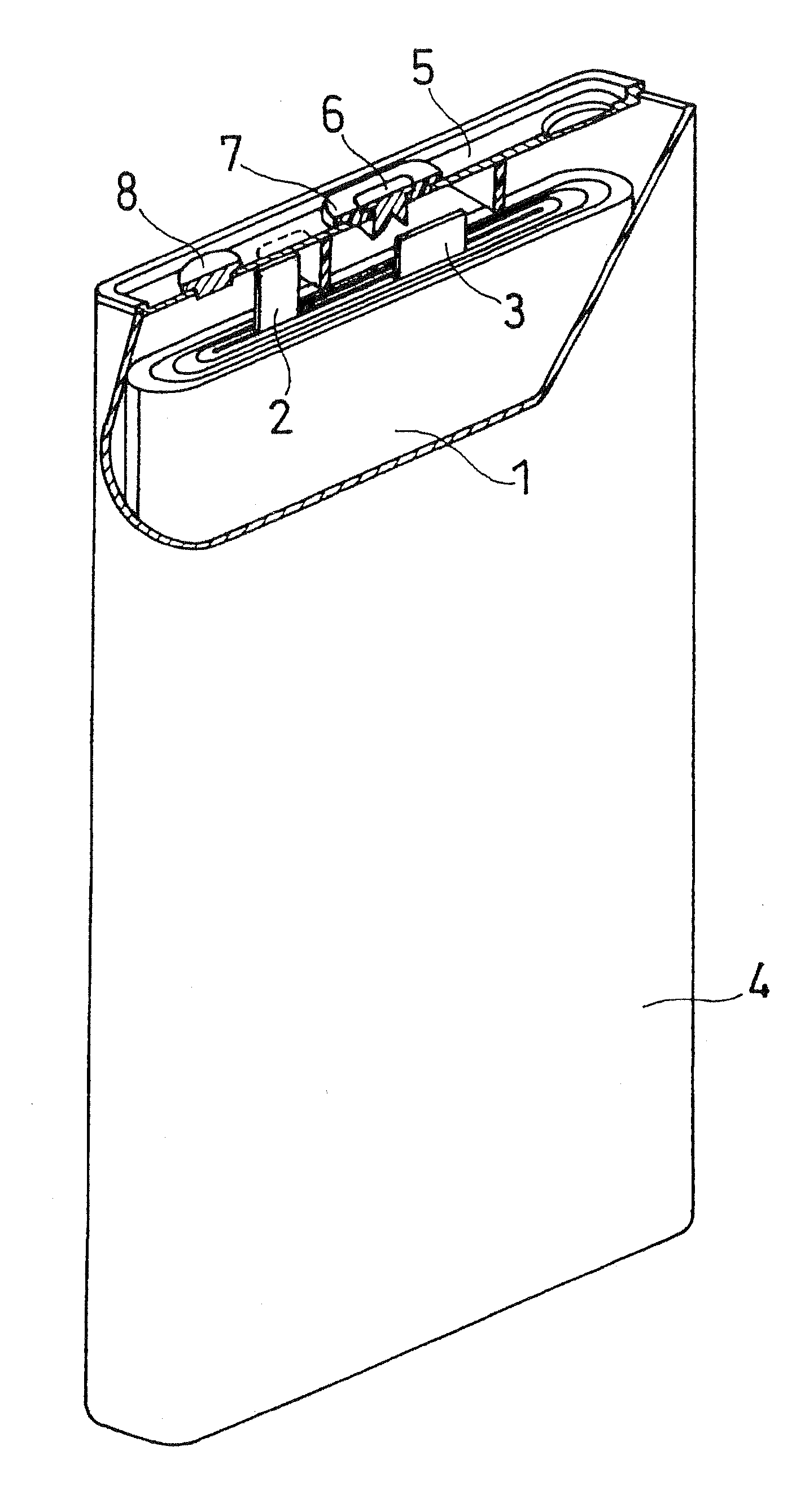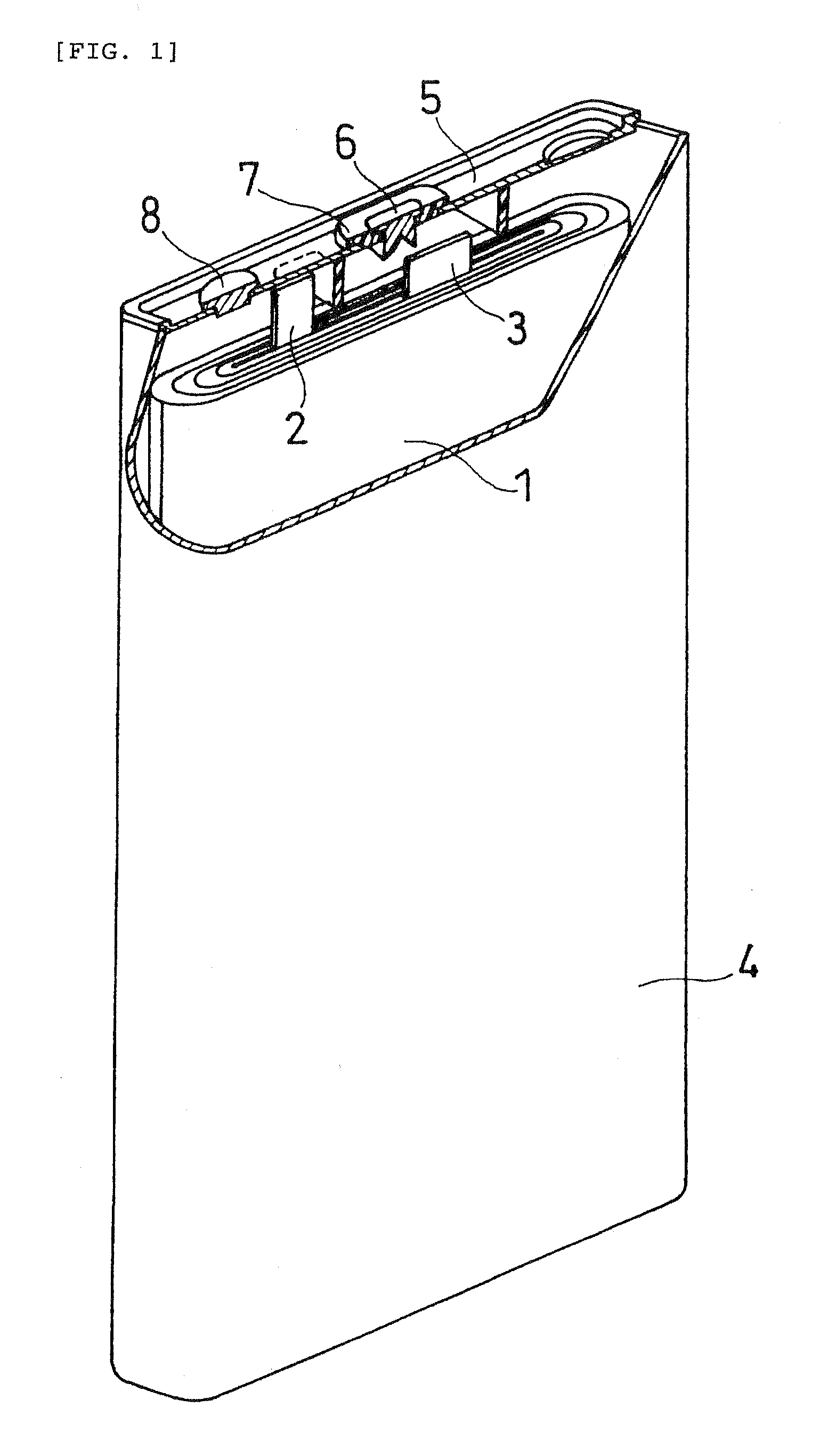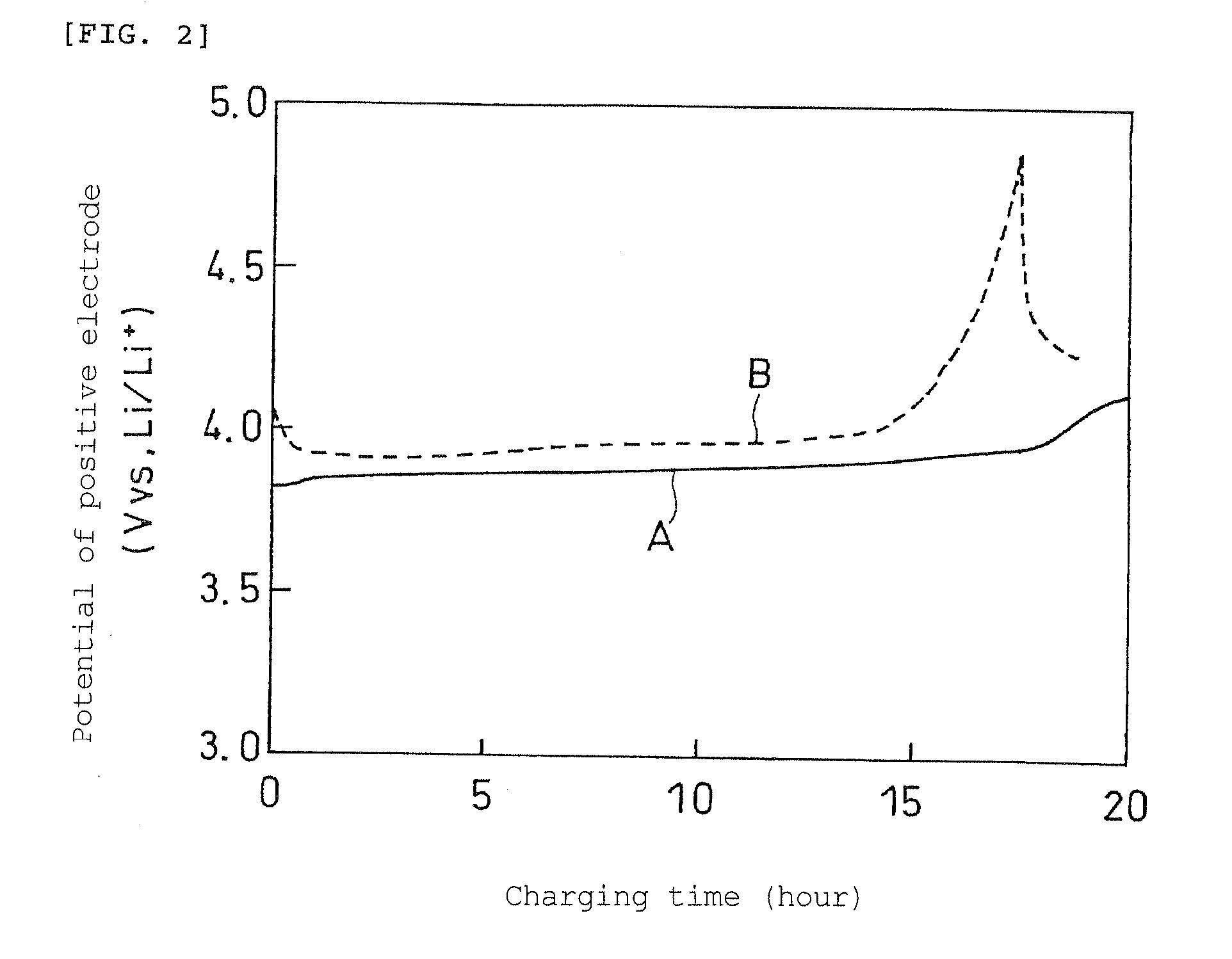Non-Aqueous Electrolyte Secondary Batery
a secondary battery and electrolyte technology, applied in the field of non-aqueous electrolyte secondary batteries, to achieve the effects of suppressing the decrease of battery capacity, preventing oxidative decomposition of electrolyte components, and high potential
- Summary
- Abstract
- Description
- Claims
- Application Information
AI Technical Summary
Benefits of technology
Problems solved by technology
Method used
Image
Examples
example 1
(i) Preparation of Non-Aqueous Electrolyte
[0074] N,N-diethyl-N-methyl-N-(2-methoxyethyl)ammonium tetrafluoroborate (DEME.BF4) was used as the onium compound. This borate was a liquid at room temperature.
[0075] LiPF6 was used as the lithium salt.
[0076] Diallyl carbonate (DAC) was used as the chain carbonate having a C═C unsaturated bond.
[0077] LiPF6, DAC and DEME.BF4 were weighed such that their molar ratio was 0.1 / 0.1 / 1, followed by mixing, thus forming a homogeneous non-aqueous electrolyte that was a liquid at room temperature.
(ii) Production of Positive Electrode
[0078] A positive electrode paste was prepared by dispersing, in dehydrated N-methyl-2-pyrrolidone (NMP), a positive electrode material mixture comprising 85 parts by weight of LiCoO2 powder, 10 parts by weight of acetylene black serving as the conductive agent and 5 parts by weight of polyvinylidene fluoride serving as the binder. This positive electrode paste was applied onto a positive electrode current collecto...
example 2
[0087] A test battery was assembled in the same manner as in Example 1, except that the reference electrode of a lithium foil was not inserted.
example 3
(i) Preparation of Non-Aqueous Electrolyte
[0094] The following were used as the onium compound.
[0095] DEME.BF4:N,N-diethyl-N-methyl-N-(2-methoxyethyl)ammonium tetrafluoroborate
[0096] TEMA.BF4:N,N,N-triethyl-N-methyl-ammonium tetrafluoroborate
[0097] P14.BF4:N-butyl-N-methyl-pyrrolidinium tetrafluoroborate
[0098] PP13.BF4:N-propyl-N-methyl-piperidinium tetrafluoroborate
[0099] TBS.BF4:tributylsulfonium tetrafluoroborate
[0100] TBP.BF4:tetrabutylphosphonium tetrafluoroborate
[0101] Non-aqueous electrolytes having compositions in molar ratio of LiBF4 / EC / DAC / onium salt=0.2 / 3.9 / 0.1 / 1 were prepared, using one of the above-described onium salts, DAC as the chain carbonate having a C═C unsaturated bond, and LiBF4 as the lithium salt, and further adding ethylene carbonate (EC) as the cyclic carbonate having no C═C unsaturated bond.
(ii) Assembly of Test Batteries
[0102] Test batteries were assembled in the same manner as in Example 1, except that above-described non-aqueous electrolytes...
PUM
 Login to View More
Login to View More Abstract
Description
Claims
Application Information
 Login to View More
Login to View More - R&D
- Intellectual Property
- Life Sciences
- Materials
- Tech Scout
- Unparalleled Data Quality
- Higher Quality Content
- 60% Fewer Hallucinations
Browse by: Latest US Patents, China's latest patents, Technical Efficacy Thesaurus, Application Domain, Technology Topic, Popular Technical Reports.
© 2025 PatSnap. All rights reserved.Legal|Privacy policy|Modern Slavery Act Transparency Statement|Sitemap|About US| Contact US: help@patsnap.com



